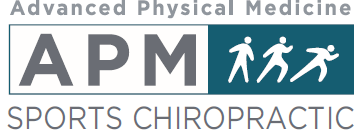Learn about car accidents, whiplash and chiropractic.
No matter how minor you may think a car accident is, injuries can still occur to the soft tissues and joints of your neck and back. Typical injuries encountered in car accidents tend to respond well to chiropractic care. Dr. Maxwell Mitchell and Dr. Candice Pollack are Chiropractic Physicians at Advanced Physical Medicine in North Haven, CT and have experience treating injuries suffered in car accidents. Typical treatment in their office consists of chiropractic manipulative therapy, electric stimulation, hot/cold packs, cross friction massage, stretching techniques and rehab exercises to strengthen injured, weak areas.
Whiplash is the most common injury seen as a result of a car accident. However, whiplash can occur from falls, sports injuries, work injuries and other injuries. Many times patients do not feel pain until a few days following the accident. This is because the signs and symptoms of whiplash do not develop until 2 to 48 hours after the injury. The most common symptoms of whiplash are pain and stiffness of the neck. A sprain/strain can also occur in the back resulting in the same symptoms. What’s interesting is approximately two thirds of people involved car accidents develop whiplash symptoms.
A sprain is when the ligaments are torn. A strain is when muscles and tendons are stretched beyond their normal limits. There are different grades of each ranging from microscopic tearing to complete tearing, which typically requires surgery. Ice is generally used during the first 48 hours to help reduce inflammation in the injured area as a result of a sprain/strain. Heat is generally used later to help increase range of motion in the area. The goal during the first few weeks following car accidents or any sprain/strain injury is to reduce pain and inflammation. Later in care the goal is to increase range of motion and strengthen the injured areas to help make them less prone to re-injury. If an injured area does not get the proper treatment, it heals weaker and this makes it more prone to re-injury.
http://www.acatoday.org

